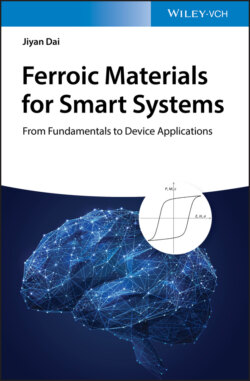Читать книгу Ferroic Materials for Smart Systems - Jiyan Dai - Страница 18
1.4 Ferroelastic Material and Device Application
ОглавлениеShape memory alloys (SMAs) are the most typical ferroelastic material, which is an important member of ferroics. The shape memory characteristics originates from the phase transition between high temperature austenite phase and low temperature martensite phase, where the shape at cubic‐austenite phase can be resumed from low temperature martensite phase whose lattice can be largely twisted (see Figure 1.13).
Figure 1.13 Phase transition between high temperature austenite phase and low temperature martensite phase, where the shape at cubic‐austenite phase can be resumed from low temperature martensite phase whose lattice can be largely twisted.
The SMAs have been widely used in devices from brace of orthodontia and other medical applications, air jet, satellite antenna, etc. Research was carried out in developing systems that would optimize the chevron “immersion” into the jet flow based on the flight condition. As shown in Figure 1.14a, SMAs activated by heat were developed that would allow for full chevron immersion in jet flow during high thrust requirements (e.g. during take‐off) and not immersing it during cruise where the thrust efficiency is of greater importance (Anon n.d.).
Figure 1.14 (a) Brace of orthodontia using shape memory alloys and (b) arthrodesis device developed by Karnes et al.
For broken bone rehabilitation, a SMA plate with a memory transfer temperature close to body temperature can be attached to both ends of the broken bone as shown in Figure 1.14b. From body heat, the plate will contract and retain its original shape, therefore exerting a compression force on the broken bone at the place of fracture. After the bone has healed, the plate continues exerting the compressive force and aids in strengthening during rehabilitation (Garlock et al. 2017).
